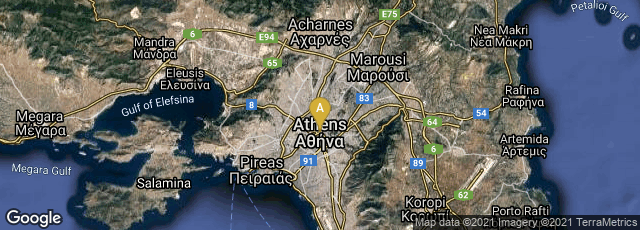About 479 BCE the Athenians began minting the
silver tetradrachm during rebuilding of Athens after they defeated the
Achaemenid Army of
Xerxes I during the
Second Persian invasion of Greece.
The obverse of the coin depicts
Athena, the goddess patron and protector of Athens, who was associated with wisdom, handicraft, and warfare.
The reverse of the coin depicts the owl of Athena with the inscription AΘE, an abbreviation of AΘΗNAΙΩΝ (the Athenians). In daily use
Athenian drachmas were called glaukes (γλαυκες, owls). The owl has traditionally been associated with wisdom because of its ability to see in the dark, where others may not be able to see.
In Roman mythology the owl became associated with the Roman goddess
Minerva.
In September 2020, when it seemed appropriate to find a symbol to serve as a logo for HistoryofInformation.com, the logo needed to be small and relatively square to fit into the space available in the upper left corner of the screen. Logos of websites are typically placed there so they remain visible when the website occupies screens of different sizes from cell phones to tablets to large monitors. I noticed that the ancient Athenian silver tetradrachm was a squarish coin, about one inch in diameter, containing Athena's owl on the reverse. To create the very clear outline version of the tetradrachm an artist redrew the coin as a composite of several original tetradrachms available on the Internet.
The classical Greek depiction of Athena's owl on the tetradrachm symbolizes the goals of HistoryofInformation.com to organize and present historical data in order to gain insight from study of the past. As a symbol of the ancient Athenians, it reflects significant culture of the past, and as
Hegel wrote, "the owl of Minerva spreads its wings only with the falling of the dusk"—meaning that philosophy comes to understand a historical condition just as it passes away.
[18] Philosophy appears only in the "maturity of reality," because it understands in hindsight."

